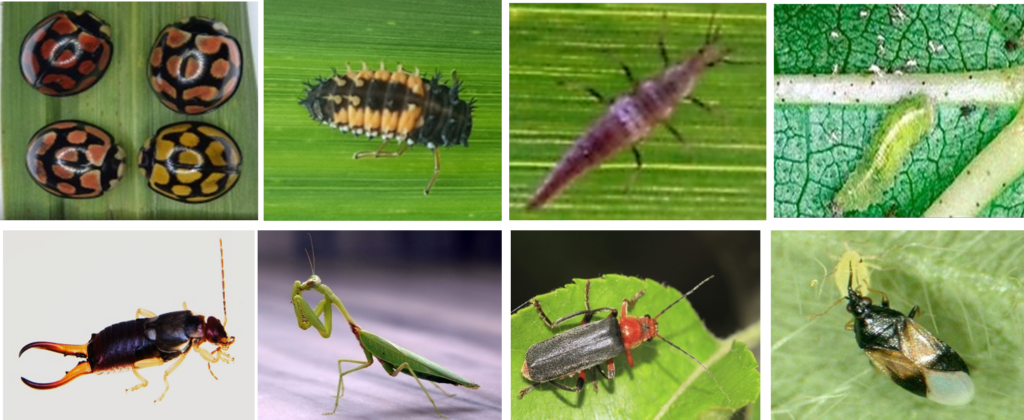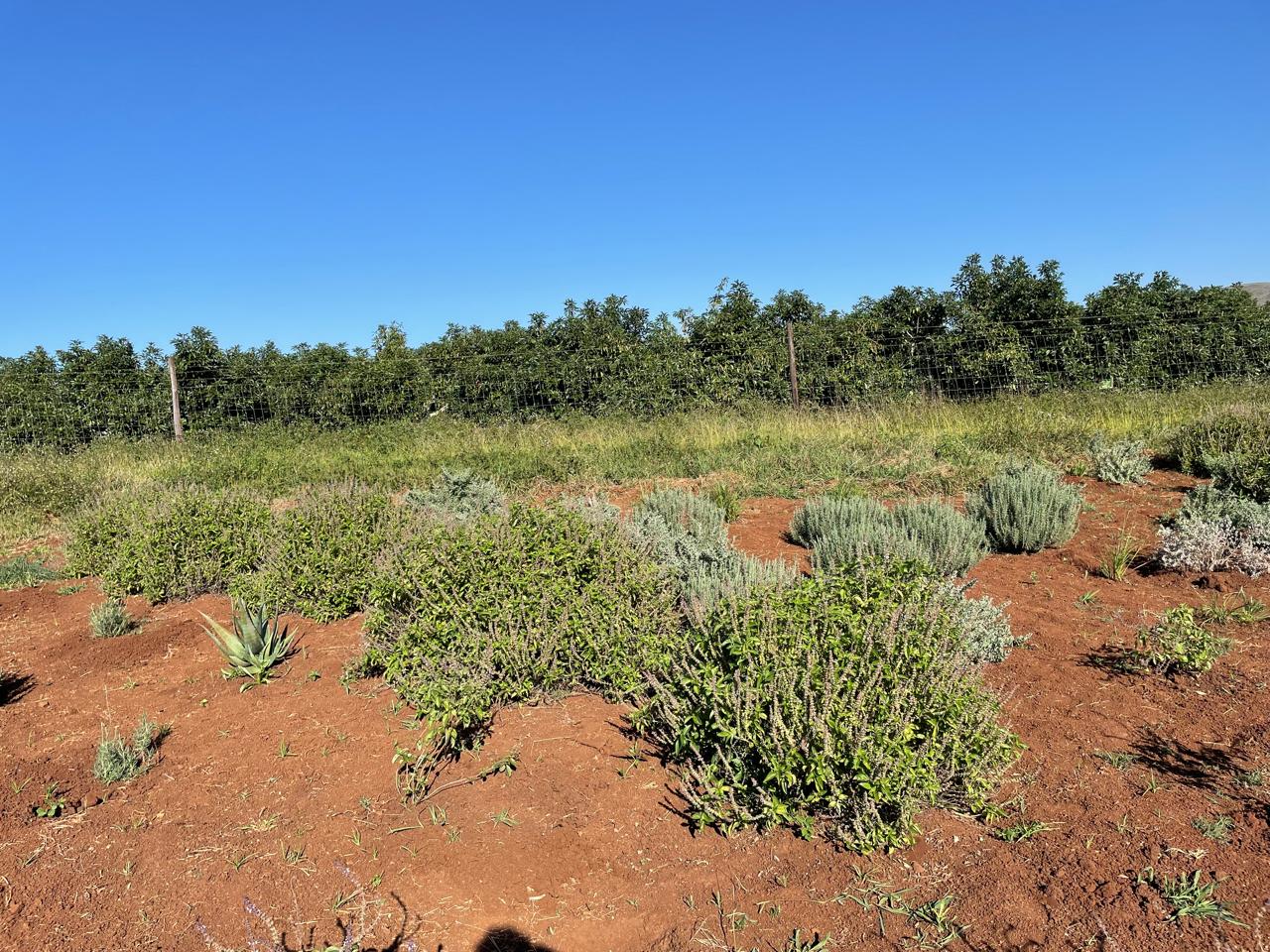The monoculture nature of sugarcane cultivation has led to various consequences, ranging from nutrient depletion in soils to a decline in both faunal and floral biodiversity, all of which have a negative effect on long-term crop health and sustainability. This is most often manifested through increased pest infestation levels and reduced impacts from natural enemies. The economic benefits of insecticides are being minimised by injudicious insecticide usage, increased costs of insecticides, and degazetting of insecticides at a faster rate than they are produced.
Farmscaping is a potential remedial practice that could be implemented in-field to enhance biodiversity within the sugarcane landscape. Farmscaping involves an integrated, whole-farm approach to the biological control of pests through layout of the farm to include flowering hedges, natural insectary plantings, cover crops, water and other features to attract and sustain beneficial organisms that are primarily predators of insect pests. Beneficial organisms include insects, birds, bats, arthropods and microorganisms. With specific reference to sugarcane, predatory insects such as ladybirds, lacewings, soldier beetles, pirate beetles, hover flies, mantids, and certain species of wasp prey on the major pests currently affecting the industry, particularly yellow sugarcane aphid, eldana and thrips (Figure 1).

Figure 1. Major predatory insects (from left) Ladybird beetle adults, Ladybird beetle larva, Lacewing larva, Hover fly larva, Earwig, Praying mantid, Soldier beetle and Pirate beetle.
The main rationale behind the concept is that beneficial insects require food and shelter if they are to control pests. Planting flowering plants will increase the likelihood that predators and parasitoids will remain in an area and assist with pest management – natural insectaries. In the absence of the specific pest during the off-seasons, these predatory insects still have the capacity to feed on pollen and nectar. These insectary plantings can consist of an area reserved entirely for beneficials or, as would be most applicable for sugarcane agriculture, they can be made up of small, planted areas of indigenous flora that will serve as reservoirs for the natural enemies. In order for such a system to work, it requires the selection of the right plants, in appropriate areas of the farm (waterways, slopes, etc), to attract the right predators.
Four primary “S-A-F-E” criteria need to be met to encourage beneficials
- Shelter: Areas protected from insecticides, intensive tillage, or other practices, such as burning, that provide habitat to sustain beneficials.
Cultivation schemes that may be compatible specifically with sugarcane and/or multicropping systems of sugarcane plus macadamias/bananas/avocado include a strip (or more if resources allow) of permanent vegetation bordering a field or between two fields, e.g. between sugarcane and macadamias. A border such as this can be planted to attract beneficials throughout the cropping season if the proper plants are used. Ideally, these should be perennials.
- Alternative Food Source: Some pests are generally present over a short duration of the crop growing cycle. However, this is not the case with yellow sugarcane aphid (YSA) and eldana, which are present all year round, but with fluctuations in population density. Food must be provided for predators of YSA and eldana during pest population dips through nectar and pollen from other plants.
- Flower-rich Habitat: Pollen and nectar are essential food for parasitic wasps, hoverflies and lacewing adults. Pollen and nectar also provide an alternative food source to ladybirds, pirate bugs, soldier beetles, lacewing larvae and predatory flies. Annual and perennial flowering plants can supply this pollen and nectar.
- Environment: The area should be rich with floral diversity and with minimal exposure to insecticides, e.g. field margins, contours, waterways, or indigenous bush zones.
A successful insectary has the following characteristics:
- Contains indigenous perennial and annual plants that provide flowers throughout the year; usually 5-6 types of plant.
- Contains plants of varying size and height to provide shelter for insects in different niches.
- Is a long-term and permanent feature of the area being landscaped.
- Provides small flowers for parasitoids (insect parasites), hover flies, wasps and robber flies.
- Provides large and long flowers for butterflies, bees and flies.
- Provides sturdy herbaceous shrubs for mantids to lay their egg casings against.
- Ideal species: Aloe, Lavandula spp., Salvia spp., Ocimum spp., Anthericum spp., Allium spp., Leonotis leonorus, Tulbaghia spp., and Crocosmia spp.
Major steps to consider before implementation:
- Analyse records of where, when and what pests occur and the relative abundance/severity of infestation.
- Know the biology and ecology of the pest and the targeted predators.
- Select the right plants for your agro-climatic region.
- Select the zones that you would like to diversify.
- Start SMALL and SIMPLE!
Remember:
- This is not a quick, “silver bullet” system.
- Some maintenance will be required in the first few seasons (trimming and weeding).
- Seed/seedlings will need to be sourced.
- Manpower will be required for planting.
- The system will most likely require fine-tuning such as adding, removing or varying the plants.
- Plants ideally planted in rows of alternating species, e.g. flowering annuals alongside flowering perennials, or strong aromatics alongside softer pollen and nectar producers.
This system is not meant to displace crop production, but rather to complement it in a more sustainable manner. In summary, the introduction of such functionally important biodiversity and ecosystem provisions in sugarcane plantations is paramount if the industry is to survive current challenges like competitive markets and insecticide resistance, and those that are sure to emerge in the future such as degazetted insecticides, contaminated waterways and decreased soil health.

